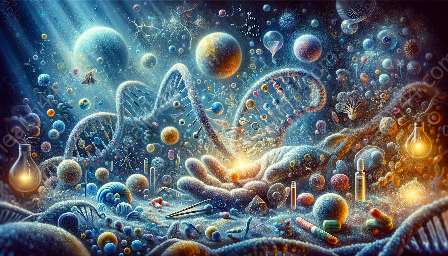Genetic diversity and evolutionary adaptation are fundamental concepts in genetics, shaping the diversity of life on Earth. Understanding how genetic variation drives evolutionary processes is essential to grasp the mechanisms behind the adaptation of species. The following topic cluster explores the intriguing world of genetic diversity and its profound impact on the process of evolution.
Understanding Genetic Diversity
Genetic diversity refers to the variation in the genetic makeup of individuals in a population, species, or ecosystem. It is the result of mutation, genetic recombination, and immigration, and is crucial for the long-term survival and adaptability of a species. The larger the genetic diversity within a population, the better it can respond to environmental changes and challenges.
Genetic diversity is influenced by numerous factors, including the population size, mutation rates, mating behavior, and natural selection. In small populations, genetic diversity may be reduced due to genetic drift, where certain traits become more or less common in a population due to chance events. Conversely, larger populations tend to have higher genetic diversity, making them more resilient to environmental pressures and changes.
Mechanisms of Genetic Variation
Genetic variation arises through several mechanisms, including mutations, gene flow, genetic drift, and natural selection. Mutations introduce new genetic variation by altering the DNA sequence, leading to changes in an organism's traits. Gene flow occurs when individuals from one population migrate and interbreed with individuals from another population, introducing new alleles and increasing genetic diversity.
Genetic drift, on the other hand, is the change in the frequency of certain alleles in a population due to chance events. Small populations are more susceptible to genetic drift, which can lead to the loss of genetic diversity and the fixation of certain alleles. Natural selection, a key mechanism in evolutionary adaptation, favors certain traits that confer a reproductive advantage, leading to the spread of beneficial alleles and the elimination of detrimental ones.
Evolutionary Adaptation
Evolutionary adaptation is the process by which a population becomes better suited to its environment over time. This process is driven by natural selection and genetic variation, resulting in the accumulation of favorable traits within a population. As the environment changes, populations with higher genetic diversity are more likely to have individuals with traits that allow them to survive and reproduce under new conditions.
Through the process of evolutionary adaptation, species acquire traits that enhance their survival and reproductive success in specific environments. These adaptations can include physiological, behavioral, or morphological changes that allow organisms to exploit ecological niches and thrive in diverse ecosystems.
Genetic Diversity, Evolution, and Genetics
Genetic diversity and evolutionary adaptation are intricately connected to the field of basic genetics and genetics. The study of genetic diversity provides invaluable insights into the genetic composition of populations, the distribution of alleles, and the potential for evolutionary change. Understanding genetic diversity also aids in assessing the conservation status of species and implementing effective conservation strategies to preserve biodiversity.
Furthermore, evolutionary adaptation relies on the principles of genetics to elucidate how genetic variation translates into phenotypic diversity and ecological success. Genetic research plays a pivotal role in uncovering the genetic basis of adaptations and identifying the genes and pathways involved in evolutionary change.
Implications for Conservation and Medicine
Genetic diversity and evolutionary adaptation have significant implications for conservation efforts and medical research. In conservation biology, maintaining genetic diversity is crucial for the long-term survival of endangered species and the preservation of resilient and adaptable ecosystems. Understanding evolutionary adaptation also helps in predicting the responses of species to environmental changes and developing strategies to mitigate the impacts of human activities on biodiversity.
In medicine, the study of genetic diversity and evolutionary adaptation informs our understanding of human health and disease. Genetic variation among human populations influences susceptibility to diseases, responses to treatments, and the prevalence of certain genetic disorders. By exploring genetic diversity and evolutionary adaptation, researchers can uncover the genetic factors that underpin human health and inform personalized medicine approaches.
Conclusion
Genetic diversity and evolutionary adaptation are cornerstones of genetics, shaping the past, present, and future of life on Earth. Understanding the mechanisms of genetic variation and the process of evolutionary adaptation provides profound insights into the diversity of life and the interconnectedness of all living organisms. As we continue to explore the intricacies of genetics and evolution, the significance of genetic diversity and its role in driving evolutionary processes becomes increasingly apparent, emphasizing the need to safeguard genetic variation and preserve the wondrous complexity of life.


